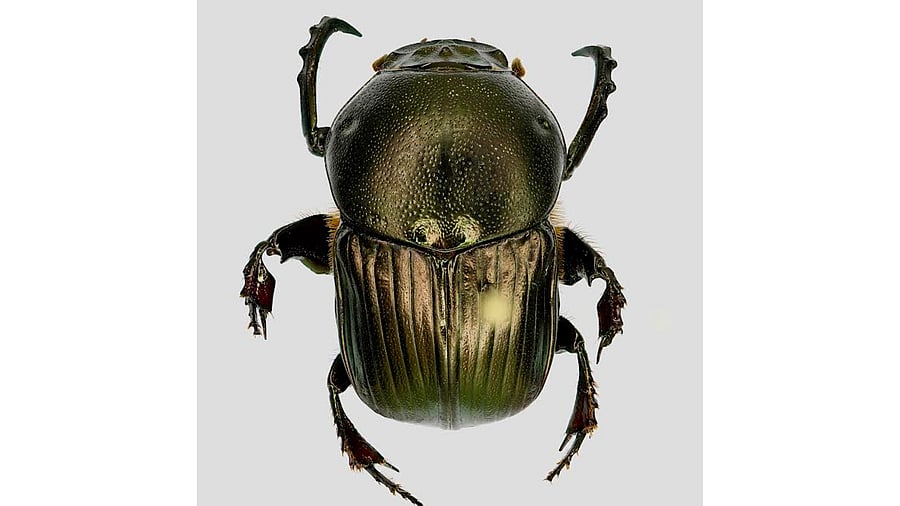
Onitis visthara, a new species of dung beetle discovered in the Hesaraghatta grasslands in northwest Bengaluru.
Credit: Seena Karimbumkara
Bengaluru: Entomologists from the Ashoka Trust for Research in Ecology and the Environment (ATREE) recently discovered a new species of dung beetle from the Hesaraghatta grasslands in northwest Bengaluru, further emphasising the urgency for conservation of the grassland ecosystem.
Onitis visthara was discovered from the biodiversity-rich grasslands as part of a larger programme to revise the taxonomy of the genus Onitis in the Indian subcontinent. The effort also led to the discovery of two other new species – Onitis kethai from Biligiri Rangaswamy Temple Tiger Reserve, Karnataka, and Onitis bhomorensis from Tezpur, Assam.
The grasslands on the catchment area of Hesaraghatta Lake host diverse species and provide essential ecosystem services, particularly as an important grazing ground for livestock, the entomologists said on Saturday.
Dung beetles, of family Scarabaeidae, process and decompose cow dung by feeding, breeding, and nesting in it. An average cow produces approximately 30 kg of dung everyday, amounting to over 10 tons per year. Cattle excrement produced in India – home to the world's largest livestock population, at over 535 million heads – is substantial and plays a crucial role in nutrient cycling.
Onitis species are tunnellers; they bury large quantities of cattle dung beneath the dung pat to provide food for their larvae.
Seena Karimbumkara, the lead author, noted that cattle dung is a major source of greenhouse gas emissions and contributes significantly to climate change. “However, by burying the dung, the dung beetles help reduce these emissions. Additionally, these beetles enhance nutrient cycling, improve soil aeration, aid in secondary seed dispersal, and help control parasites,” she said.
The researchers said Onitis was a “relatively rare” genus found in the Afrotropical, Oriental, and Palaearctic regions. Their findings were published in the European Journal of Taxonomy. Only 176 species of Onitis had been reported globally, before the discovery of the new species.
Seena and Priyadarsanan Dharma Rajan, who leads the insect lab at ATREE, have been studying dung beetles for over 20 years. Their research to complete the taxonomy revision involved field collections across India and examination of Onitis specimens in major international insect museums.
Priyadarsanan said Hesaraghatta grasslands and the nearby Avalahalli forests were among Bengaluru’s few remaining patches of vegetation that survived rapid urbanisation. “Bengaluru’s natural landscape was once dominated by dry deciduous trees, interspersed with wetlands and open grasslands. Given their rich biodiversity and the valuable ecosystem services they provide, these landscapes should be protected as a biodiversity heritage of Bengaluru,” he said.
Onitis visthara is named for its relatively broader appearance (visthara is breadth in Kannada). O kethai is named after the entomologists’ field assistant late Ketha Gouda and Onitis bhomorensis after the bridge Kolia Bhomora across Brahmaputra, from where the new species was collected.